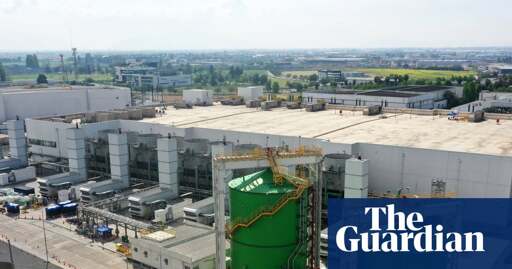Tech companies’ use of Pfas gas at facilities may mean datacenters’ climate impact is worse than previously thought
Two kinds of cooling systems are used to prevent the semiconductors and other electronic equipment stored in datacenters from overheating. Water cooling systems require huge volumes of water, and chemicals like nitrates, disinfectants, azoles and other compounds are potentially added and discharged in the environment.
Many centers are now switching to a “two phase” system that uses f-gas as a refrigerant coolant that is run through copper tubing. In this scenario, f-gas is not intentionally released during use, though there may be leaks, and it must be disposed of at the end of its life.
The datacenter industry has claimed that f-gas that escapes is not a threat because, once in the air, it turns into a compound called Tfa. Tfa is considered a Pfas in most of the world, but not the US. Recent research has found it is more toxic than previously thought, and may impact reproductive systems similar to other Pfas.
Researchers in recent years have been alarmed by the ever-growing level of Tfa in the air, water, human blood and elsewhere in the environment. Meanwhile, some f-gases are potent greenhouse gases that can remain in the atmosphere for thousands of years. But f-gasses are lucrative for industry: about 60% of all Pfas manufactured from 2019 to 2022 were f-gas



U can always trust the guardian to construct a misleading narrative that falls apart at the slightest bit of logic.